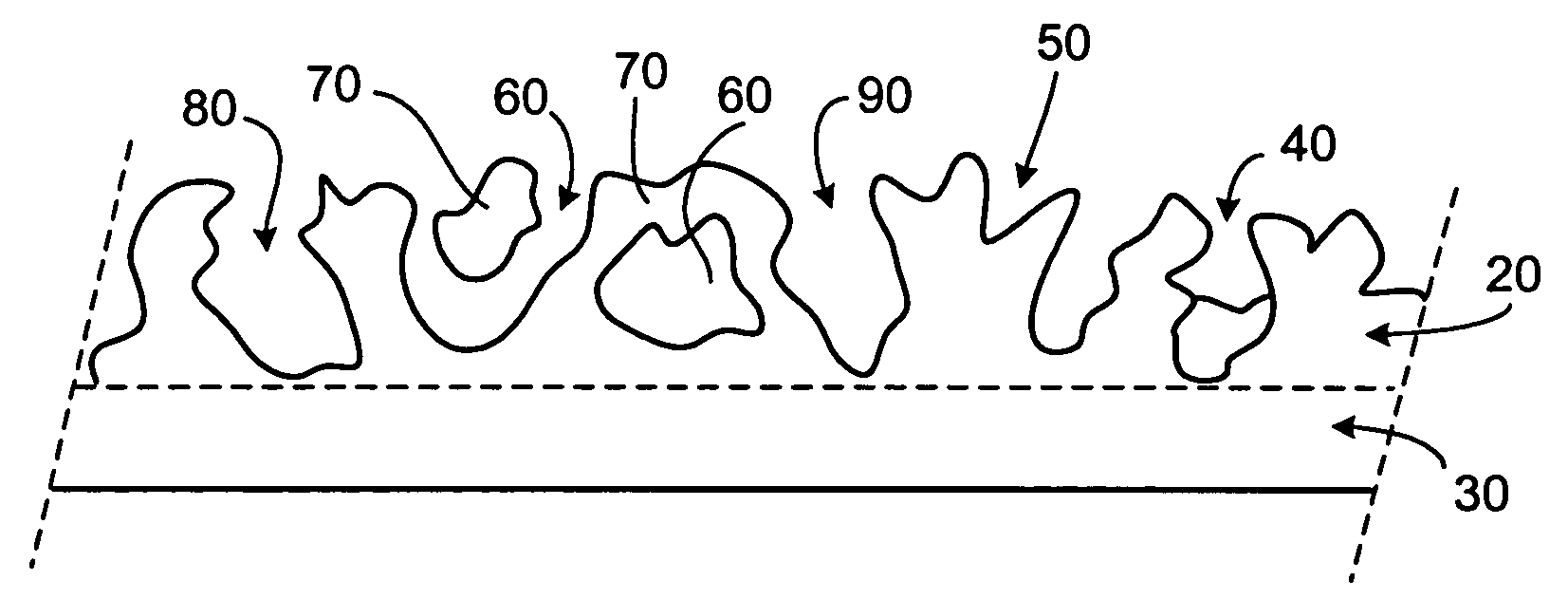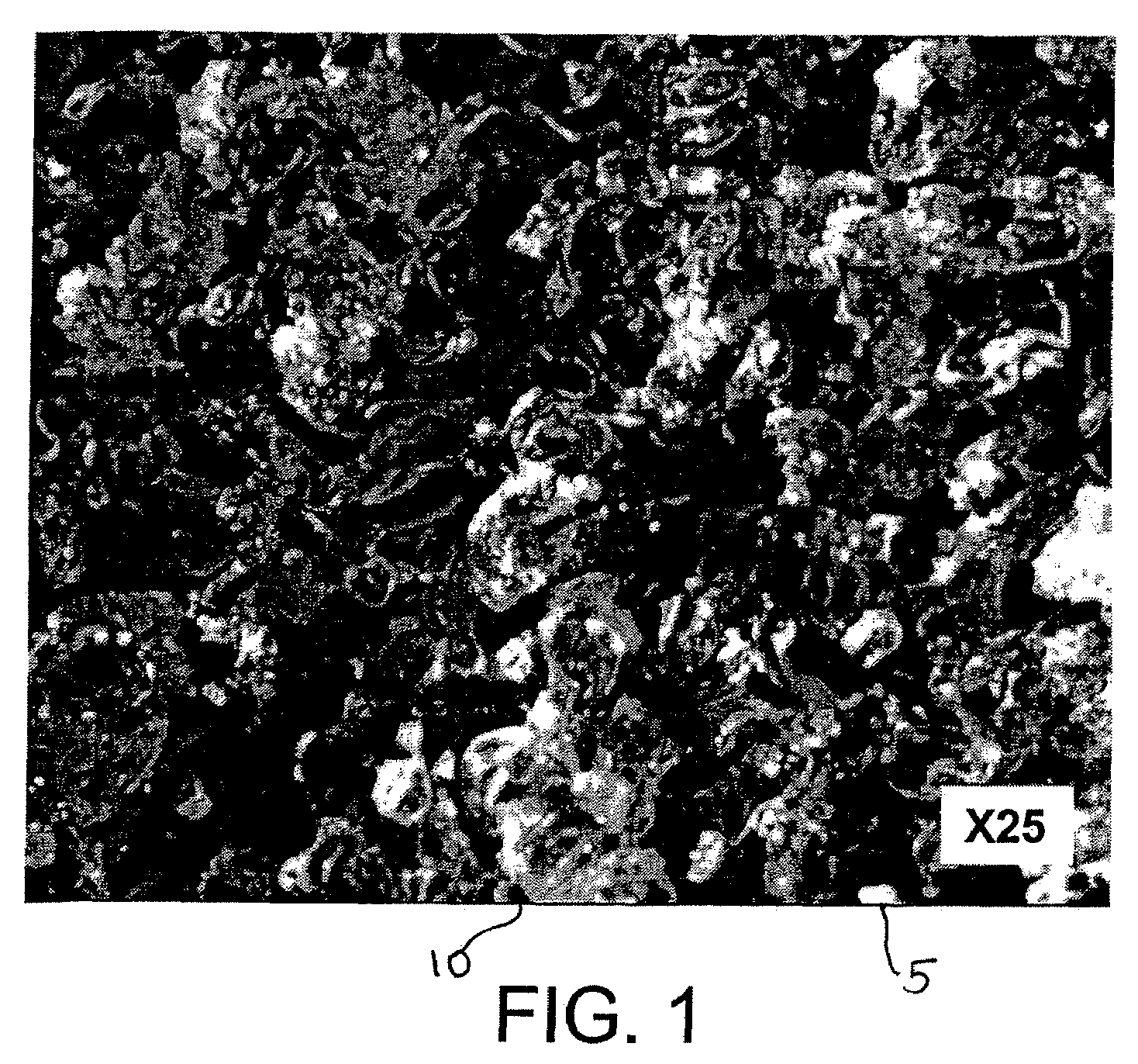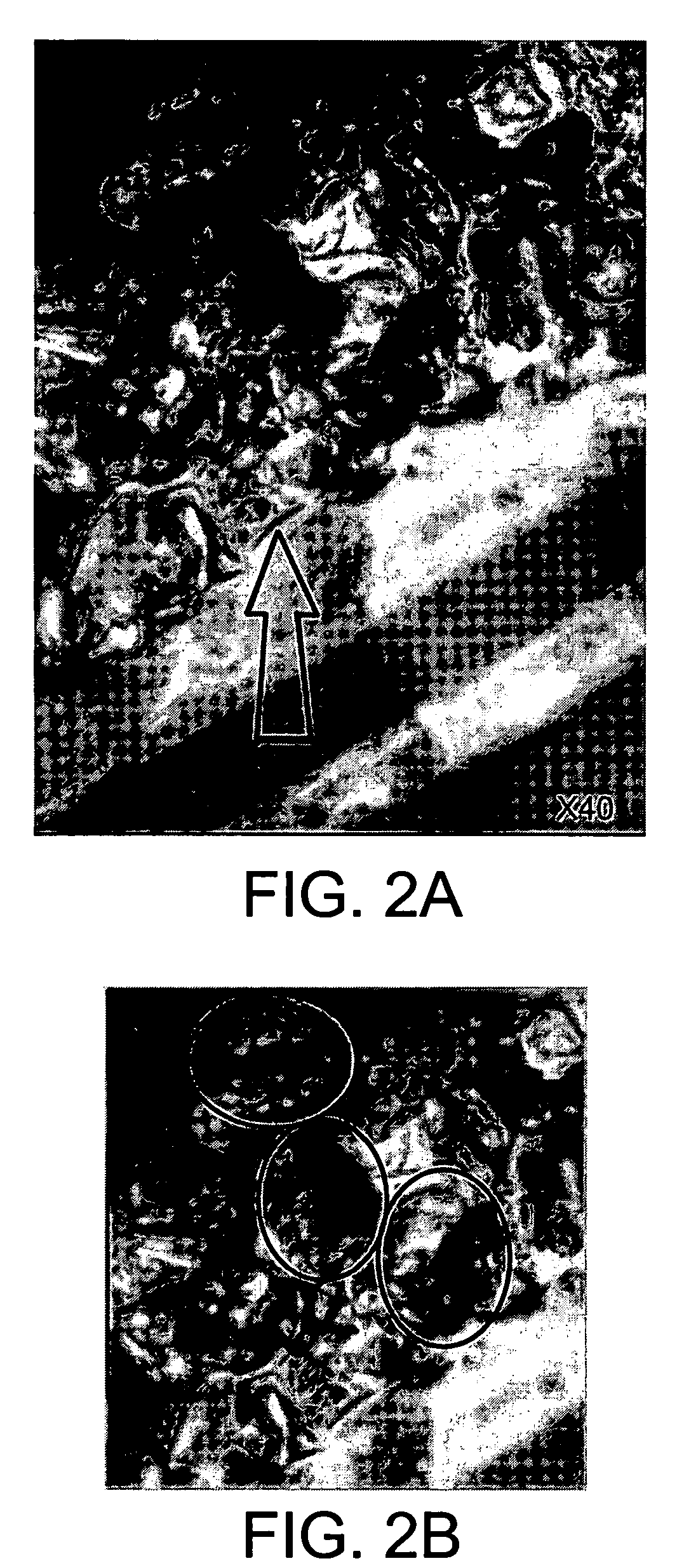Devices having a textured surface
- Summary
- Abstract
- Description
- Claims
- Application Information
AI Technical Summary
Benefits of technology
Problems solved by technology
Method used
Image
Examples
example
[0044]A mammary prosthesis having a microporous surface texture can be prepared as follows. An elastomeric shell is formed by conventional dip-molding in an HTV silicone dispersion using an appropriately sized and shaped mandrel. After each dip, solvent is allowed to evaporate so that the new silicone layer is stabilized. The stabilization or solvent evaporation can be accelerated by heating (e.g., heating at 120° F. for 15 minutes). This process is repeated until a shell having the desired thickness is formed. After the last layer of silicone is applied, the shell can be partially or fully cured. While it is desirable to allow solvent to evaporate from the shell, it can be desirable to not cure the shell at all. The tackiness of an uncured silicone shell fosters adhesion of the solid particles. Once the shell has been formed, particles of fully cured HTV silicone having an average diameter of 100 microns are applied to the surface of the shell. Because the surface of the shell is t...
PUM
| Property | Measurement | Unit |
|---|---|---|
| Fraction | aaaaa | aaaaa |
| Fraction | aaaaa | aaaaa |
| Fraction | aaaaa | aaaaa |
Abstract
Description
Claims
Application Information
 Login to View More
Login to View More - R&D
- Intellectual Property
- Life Sciences
- Materials
- Tech Scout
- Unparalleled Data Quality
- Higher Quality Content
- 60% Fewer Hallucinations
Browse by: Latest US Patents, China's latest patents, Technical Efficacy Thesaurus, Application Domain, Technology Topic, Popular Technical Reports.
© 2025 PatSnap. All rights reserved.Legal|Privacy policy|Modern Slavery Act Transparency Statement|Sitemap|About US| Contact US: help@patsnap.com



